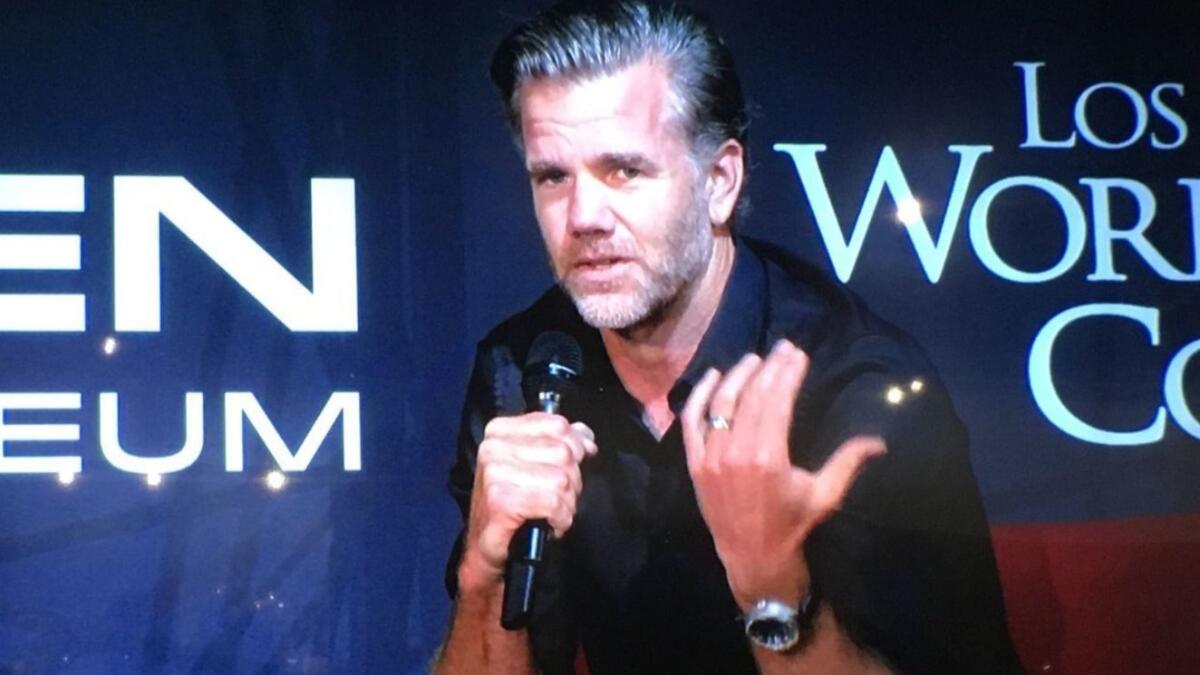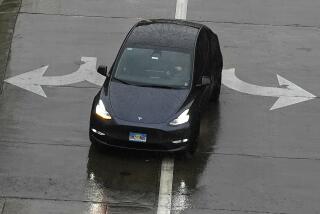Tesla’s head designer on the Model 3: ‘It’s based on the idea of minimalism, that less is more’

Tesla’s finances are in an ugly phase at the moment, but the company still builds fun-to-drive, attractive cars.
Automobile Magazine recently gave the Model 3 electric sedan its 2018 Design of the Year award, calling the car “simple and straightforward, perfectly proportioned with minimal extraneous detailing. It has all been done with unmistakably good taste.”
The Model S fastback sedan, introduced in 2012, is widely admired for looking both classic and futuristic at the same time. Even auto industry veteran Bob Lutz, a harsh critic of Tesla as a company, calls the Model S “a beautiful car.”
The Model X SUV, with its gull-wing doors, is more polarizing, but love it or hate it, it attracts attention.
The head designer for all of these vehicles, Franz von Holzhausen, was interviewed in Los Angeles on Thursday by Pixar executive Jay Ward, creative director for the animated “Cars” movie series. The interview was part of a Future of the Automobile conference co-hosted by the Los Angeles World Affairs Council and the Petersen Automotive Museum.
Von Holzhausen, 49, remembered his first days at Tesla in 2008, when he and his team began to design the Model S.
“We had no history, no legacy,” he said. That was a blessing and a curse. He had a clean sheet of paper, but he was also “bearing the brunt that the [Model S] design would be the foundation of the company going forward.”
The car needed to appeal to high-income buyers interested in the environmental advantages of an electric car, but not at the expense of good looks and top performance.
“As a new brand, we were basically competing with Audis and Mercedes and the BMWs of the world,” he said.
To compete in that market segment, and set itself apart without looking weird, the Model S had to be “beautiful and alluring, like a moth attracted to a flame,” he said. “You’re drawn to it although you don’t know anything about it.”
The Model S achieved commercial success despite a multitude of naysayers in the media and the traditional automotive industry, and proved to industry executives and government regulators that there was indeed consumer interest in electric cars.
Design is in von Holzhausen’s blood; his father was an industrial designer. Von Holzhausen started his career working at Volkswagen on its New Beetle project in the late 1990s. (“It was originally thought of as an electric vehicle,” he said Friday.) There he deepened his attachment to the “clean Germanic feeling” and Bauhaus design.

Next he went to General Motors, where, under Lutz, he led the design team for the Pontiac Solstice two-seat sports car and competitor to the Mazda Miata.
Mazda liked what it saw and hired von Holzhausen in 2005. But he couldn’t resist when Elon Musk came calling.
He didn’t talk much about the Model X at the Petersen. Even Musk admits the gull-wing doors were a mistake.
But he spoke at length about the Model 3, and its unusual interior design, which replaces the instrument cluster with a 15-inch touchscreen, leaving the dashboard bare.
“It’s based on the idea of minimalism, that less is more,” he said. “Extra buttons, extra switches are just excess.”
With Tesla’s over-the-air software, he said, the screen and many of the car’s functions can be updated automatically, which, he said, “allows the car to get better with time.”
And, he added, “it allows it to evolve into the autonomy movement, as regulations allow better and safer technology.”
Twitter: @russ1mitchell







